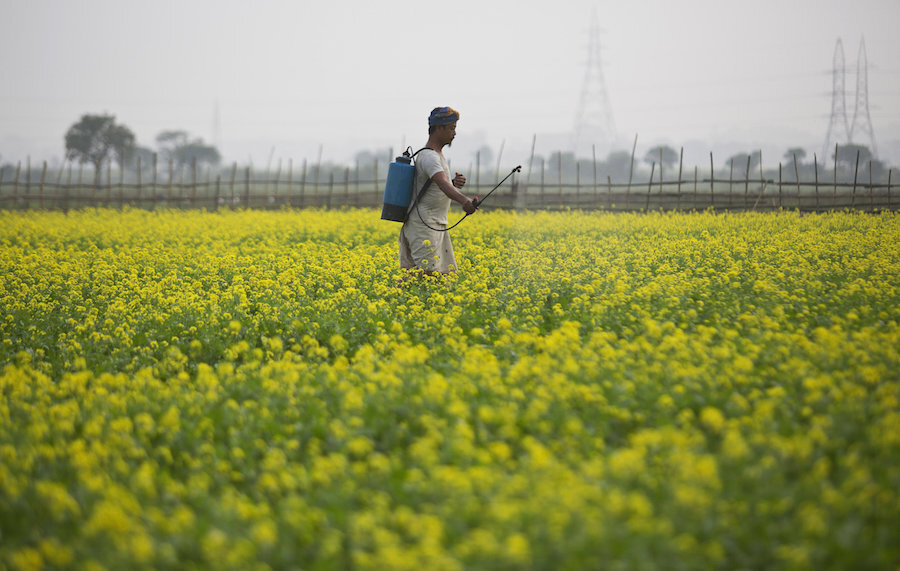The costs and benefits of agriculture
Loading...
As climate leaders gather in Paris for the 21st Session of the Conference of Parties (COP21), farmers and food leaders are paying close attention to negotiations, which will determine how global environmental policy will continue to affect the food system.
Alongside COP21, other workshops such as the 2015 Global Landscapes Forum (GLF Paris) will take place. The agenda for GLF Paris includes indigenous land rights, agroforestry, international trade and biodiversity, and tenure rights around the world.
Farmers are responsible for much of the world’s land use and associated climate emissions, and are key partners in reducing the environmental impact of human activities. The Economics of Ecosystems and Biodiversity (TEEB) is working to place a value on the invisible environmental services provided by farmers. TEEB for Agriculture and Food (TEEBAgFood) specifically examines the links between ecosystems and food, helping policymakers to understand the true worth of eco-agri-food-systems.
According to a study by Dr. Harpinder Sandhu, the economic value of ecosystem services—the benefits that humans derive from nature—could exceed the global costs of pesticides and fertilizers even if adopted on only 10 percent of farmland. And research from Trucost shows that organic farmers obtain significantly higher margins (ranging from US$1750 to 4536 per hectare) compared to conventional farmers (US$1585 to 2560 per hectare). Trucost is an organization that provides data to business clients to help firms understand their economic dependencies on natural capital.
True Cost Accounting (TCA) assigns value to the social, environmental, and health impacts of producing food. Unfortunately, despite many examples of positive externalities from agriculture, the farming sector as a whole incurs huge environmental, social, and health costs that exceed its global profits. TCA can help to rein in these negative externalities and help eaters, producers, businesses, and policymakers value the environmental and health benefits.
An interim report by TEEBAgFood, released December 6, 2015, presents evidence from feeder studies that identify policy options to support more sustainable practices in agriculture. By assessing economic tradeoffs and long-term environmental impacts, these studies have contributed to a better understanding of the most effective incentive mechanisms in the food system.
For example, the system of rice intensification (SRI) could cut environmental costs of rice farming in India by 25 percent while simultaneously increasing profits by 18 percent. And in Brazil, holistic grazing management, where cattle are penned in smaller paddocks to allow grassland to recover elsewhere, could reduce environmental costs by 11 percent due to increased carbon sequestration. Other feeder studies have focused on inland fisheries, maize, agroforestry, and palm oil through partnerships with the U.N. Food and Agriculture Organization, Trucost, and the World Agroforestry Center.
“There’s a cost to implicitly valuing the services nature provides at zero, or close to zero, or not factoring in how farming practices impact the land, the people that work it, and communities,” says Alexander Müller, TEEBAgFood study leader. “We’re incorporating the voices of stakeholders along the entire food chain, from farm to fork, as well as policymakers and those already involved in the movement towards a true cost accounting of food.” Müller reported on the study findings with colleague Pavan Sukhdev, Special Advisor to the report, at GLF Paris, seeking to identify policy and economic drivers that can influence land use decisions.
The Global Alliance for the Future of Food, which is a coalition of foundations facilitating food system change, was one of the key funders for the interim report. “We can’t afford taking a business-as-usual approach any longer,” says Guillermo Castilleja, Chair of the alliance. “How we produce, distribute, and consume food will need to change if we want to address pressing global challenges like climate change, how to feed a growing population, and access to good food for all.”
These TCA studies represent a new research focus for many food and agriculture organizations. FAO is also working to account for the full costs of food waste across the globe. Food Tank recently released a new TCA report, “The Real Cost of Food: Examining the Social, Environmental, and Health Impacts of Producing Food.” And the Sustainable Food Trust works to develop solutions to food system problems through leadership and collaboration, communications and citizen engagement, and research and policy.
It’s time to support a more ecological paradigm of agricultural intensification, rewarding leaders who act as environmental caretakers and incentivizing other farmers to follow in their footsteps.
This article first appeared at Food Tank.







